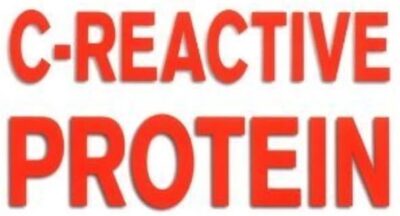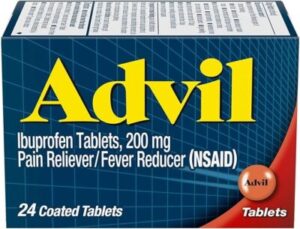CHRONIC low-level inflammation - Present in most health problems

A chronic low-level inflammatory response occurs if an infection/ injury continues, such that the problem is NOT resolved within a few days
What is chronic low-Level inflammation?
First let’s mention that normal inflammation is a necessary immune response to tissue injured by various undesirable factors with the aim of “fixing” the problem.
Inflammation – Can’t live with it, Can’t live without it!
Chronic low-levels of inflammation occur as your body’s immune system responds to persistent, undesirable factors:
- Long lasting microbial infections;
- Repeated injuries resulting from exercise;
- Tooth decay / gum disease;
- Unbalanced diet / Missing nutrients / Oxidant damage from eating too much sugar, meat or dairy / antinutrients such as lectins in cashew nuts, peanuts or improperly prepared legumes;
- Hazardous chemicals /pollutants in food or environment
- Psychological worry and stress;
When injury / infection continues unresolved, it becomes a chronic inflammatory response. Prolonged, unresolved inflammation causes ongoing tissue damage with related problems. Some problems are felt immediately, sometimes (but not always), manifesting as pain, such as joint pain. Others “fester behind the scenes” unnoticed until inflammatory damage reveals itself as a diagnosed health problem, such as a heart attack, diabetes or asthma. These inflammatory-related diseases are the diseases of our time, causing the most deaths:
- Acanthosis Nigricans
- Acne Vulgaris
- Allergies
- Asthma
- Alzheimer’s Disease
- Atherosclerosis
- Bipolar Disorder
- Breast Cancer
- Cardiovascular Disease (CVD)
- Cataracts
- Cervical Cancer
- Childhood Type-2 Diabetes
- Chronic Fatigue
- Colon & Rectal Cancer
- Cushing’s Syndrome
- Dandruff
- Depression
- Diabetes Mellitus / Insulin Resistance Syndrome
- Dyslipidemia
- Fatty Liver Disease
- Graves Disease
- Heart Disease
- High LDL Cholesterol
- High Triglycerides
- Hirsutism
- Hypoglycemia
- Hypothyroidism
- Kidney Disease
- Low HDL Cholesterol
- Lupus
- Multiple Sclerosis
- Neuropathy
- Neuritis
- Osteoporosis
- Pancreatic Cancer
- Parkinson Disease
- Polycystic Ovary Syndrome (PCOS)
- Prostate Cancer
- Rheumatoid Arthritis
- Scleroderma
- Seborrhea
- Strokes
- Varicose Veins
Sometimes the body’s immune system attacks the body’s own cells. This causes what is referred to as an autoimmune disease
- The immune system (I.S.) “Sends in the troops” to fight infection, toss out toxins and repair damage. It has trained its “workforce” to recognize, tag and destroy invaders (antigens) and to also recognize that body tissue is not the enemy; sometimes however, some of the “troops” “disobey orders”, targeting, attacking and destroying the body’s own cells . Why this happens is still not well understood. It is possible that microbes can “hide” within tissue, such as in joints and the myelin surrounding nerve cells, and the immune system destroys tissue in an attempt to “get at” them.
- The I.S. mostly “deals with” rebellious immune cells targeting the body’s own cells. In some cases, the body-targeting immune cells are removed or deleted. In other cases, they are “silenced” by immune cells called regulatory or suppressor cells. Unfortunately, some escape to roam the body. If the body is later exposed to a microbe that carries antigens resembling those on a particular organ (immunologists call this molecular mimicry), then the escapee body-targeting cells take aim at the body, damaging the very tissue that they are supposed to be defending.
- Body-targeting immune cells typically attack red blood cells, blood vessels, connective tissues, endocrine glands (E.g. thyroid, pancreas), muscles, joints, skin;
- There are ~80 different types of auto-immune disorders (according to different areas attacked). Including, allergies, Hashimoto’s thyroiditis, Grave’s disease, pernicious anemia, Addison’s disease, Type I diabetes (pancreas), Rheumatoid arthritis, Lupus erythematosus (Non-organ specific), Sjogren’s syndrome,Multiple Sclerosis (brain, spinal cord, myelin sheath), Myasthenia gravis, Celiac disease, psoriasis (skin cells)
- Autoimmune activity is more prevalent in women than in men. Suggests a hormonal (possibly estrogenic) influence;
- Any therapy must be able to control the autoimmune process, but maintain the body’s ability to fight disease
How to treat chronic low-level inflammation
Phenomenon seen in chronic low-level inflammation
- A loss of autonomic sympathetic (“call to action”) drive in autonomic nervous system (ANS); E.g.autonomic sympathetic system controls such as heart rate, blood sugar levels and blood vessel dilation / constriction
- Cells convert from aerobic to anaerobic metabolism, lowering cellular energy output. i.e. not using oxygen in the Krebs’cycle to produce energy; a cancerous cell is one that has converted from aerobic / respiratory metabolism to less efficient anaerobic / fermentative metabolism;
- Decrease in enzyme function
- Loss of metabolic and anabolic hormones. Seen as a decrease in basal metabolic rate;
- Loss of digestive integrity
- Increase of stress hormones: Growth Hormone (GH) and CORTISOL. Internal damage causes body to generate GH to protect nerves, organs and GI tract;
- Major increase in immune system’s production of potentially tissue-damaging oxidants (E.g. Free radicals: ROS, RNS). Produced for the purpose of killing microbes; called oxidative stress;
- INSULIN resistance /Metabolic Disease
- Increase in GI tract flora and pathogens. Candida albicans and gram-negative rods bacteria over-stimulate immune system, which can lead to cancer in the GI tract;
- Increase in adipose tissue /obesity and loss of lean mass. Animal and human studies have shown that obesity is associated with chronic inflammation. Compared to fat tissue from lean people, fat from obese people contains more cells that produce activators of the inflammatory response. A topic for more research
- Loss of bone density
- Circadian rhythms tend to flatten out. Instead of a normal series of peaks and troughs that are modulated throughout the day – this reflects as a decreased life span.
- Over-worked immune system depletes nutrient reserves. E.g. amino acids and hormones;
Tests for chronic low-level inflammation
Main tests for chronic low-level inflammation:
- C-Reactive Protein (CRP)
- Tumor necrosis factor-alpha (TNF-a)
- Interleukin-6 (IL-6)
- Interleukin 1b [IL-1(b)]
- Interleukin-8 (IL-8)
Often combined with tests for:
- LDL-C
- HDL-C
- Triglycerides
- Lipoprotein (a)



















